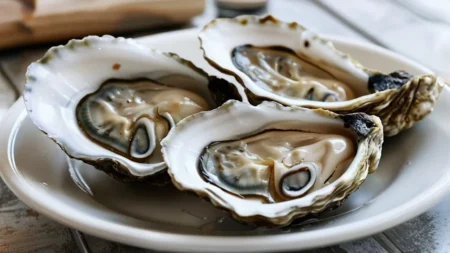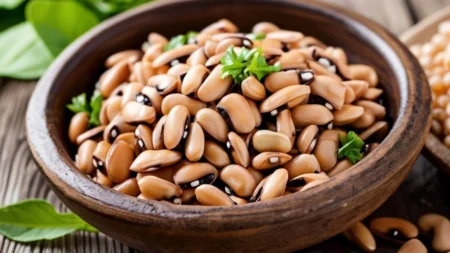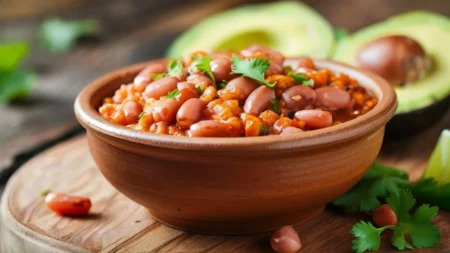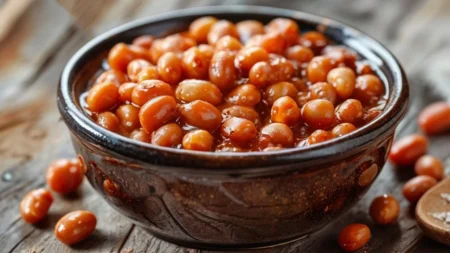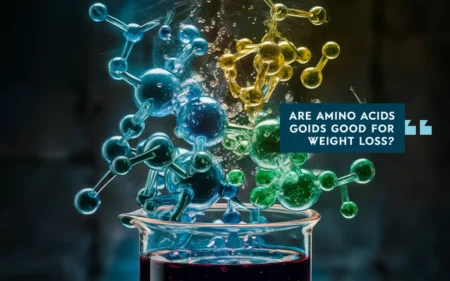Oxtail has become more than just a simple dish. It’s now a top choice in many cuisines worldwide because of its incredible taste and texture. This dish is made from the tail of cattle and often used in various recipes like soups, stews, and braised meals. When oxtail is coming from grass-fed cows, it is even tastier and more nutritious.1
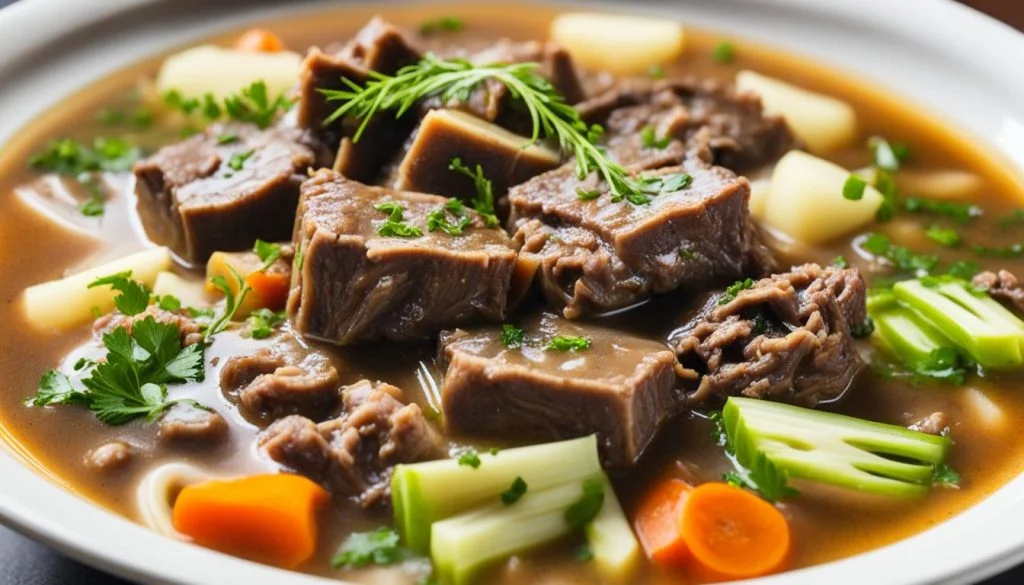
Key Takeaways
- Oxtail is high in protein and collagen, making it beneficial for skin, hair, and bone health.
- Grass-fed oxtail contains more healthy fats like omega-3s and CLA compared to grain-fed options.
- Oxtail is a calorie-dense food, so portion control is important for weight loss.
- Oxtail is high in sodium, which may be a concern for those with hypertension or heart health issues.
- Choosing high-quality oxtail with good marbling ensures maximum flavor and nutrition.
The Nutritional Profile of Oxtail
Oxtail is rich in nutrients and offers great health perks. A serving of cooked oxtail, about 100 grams, has roughly 30 grams of protein. This is around 60% of what’s needed daily.12 Protein helps our muscles heal, makes hormones, and boosts our immune system.
High in Protein
Oxtail serves up a good dose of quality protein, about 30 grams in every 100-gram portion.23 Getting this much protein is key for keeping our muscles strong, helping our hormones, and powering our immune defense.
Abundant in Collagen
Oxtail is filled with collagen, turning to gelatin when slow-cooked.2 Collagen is crucial for skin, hair, nails, and more. It makes them moister, more springy, and less wrinkly.1 A 2022 research shows eating collagen can add moisture and bounce to our skin, while also softening wrinkles.1
Source of Healthy Fats
Oxtail offers healthy fats, including monounsaturated fats that lower harmful cholesterol.12 If oxtail is from grass-fed cows, it’s also rich in omega-3 fats and conjugated linoleic acid. These fats can lower body fat and improve immunity.1
Rich in Minerals
Oxtail is packed with crucial minerals like iron, zinc, selenium, and phosphorus.12 These minerals are vital for making blood cells, keeping our immunity strong, fighting off harmful substances, and maintaining our bones.
Vitamin Powerhouse
Oxtail is a great source of B vitamins, with B-12 for healthy nerves and niacin for digesting food and making energy.2 It also has many other vitamins that keep us healthy and feeling good.
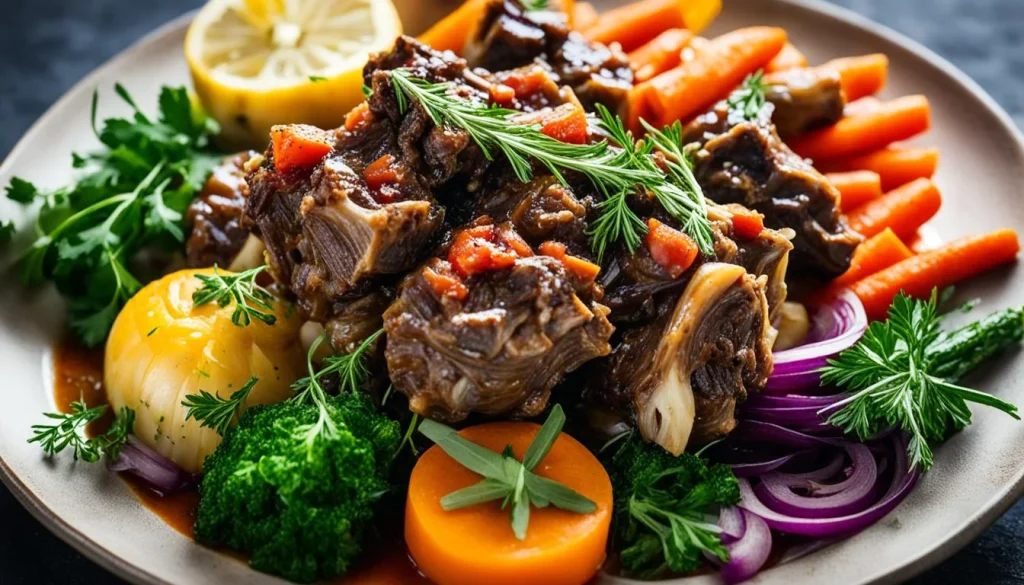
Is Oxtail Good for Weight Loss?
Oxtail is packed with nutrients but also has a lot of calories. Each 100-gram serving has about 250-300 calories.2 This means you’ll need to watch how much you eat if you’re trying to lose weight.
Calorie-Dense
Oxtail is rich in calories, with 250-300 for every 100 grams.2 Its high-calorie content can make fitting it into a weight-loss diet hard. It might add a lot to your daily calorie count. You’ll have to be careful with portion sizes and balance your diet well if you want to include oxtail in a weight-loss plan.
High in Sodium
Oxtail also has a lot of sodium.2 Too much sodium can cause high blood pressure and heart problems over time. For those looking to lose weight, cutting down on how much oxtail they eat or choosing low-sodium cooking methods is important.
Contains Cholesterol
Another thing to note is that oxtail is high in cholesterol.2 This can add to health issues like heart disease. Watching cholesterol is important for weight management, especially for those with health concerns.
In short, oxtail is nutrient-rich but its high calories, sodium, and cholesterol levels make it tricky for weight loss. You need to watch what you eat and how much if you plan to eat oxtail while aiming to lose weight. Balancing these nutritional elements is key for a healthy weight-loss plan.
Conclusion
Oxtail is a nutritious and tasty food that can enhance a healthy diet. It is packed with protein. A 100-gram serving offers about 30 grams of protein. This is roughly 60% of what you need each day.2 Also, oxtail is full of collagen, which turns into beneficial gelatin when cooked slowly. This is great for your skin, joints, and gut health.4
Although oxtail is high in calories, ranging from 250 to 300 per 100-gram serving,2 it’s a rich source of important minerals and vitamins. Minerals like iron, zinc, selenium, and phosphorus, and B vitamins including B-12 and niacin are abundant. This makes oxtail a nutrient-packed meal.2 Plus, it has healthy fats that can cut down bad cholesterol and supply vital nutrients.2
Yet, it’s essential to note oxtail’s high sodium, and the fat and cholesterol it carries. This is crucial for weight loss or managing health issues.25 Eating oxtail moderately and combining it with a diet rich in nutrients will maximize its health perks. It enhances nutrient absorption and adds a tasty twist to your dishes.24
FAQ
What is oxtail and how is it used in cooking?
Oxtail comes from the tail of cattle. It’s a key ingredient in soups, stews, and braised meals. Oxtail brings a rich taste and smooth texture to dishes when cooked well.
What are the nutritional benefits of oxtail?
Oxtail is rich in nutrients, which are good for your health. In a 100-gram serving, cooked oxtail has about 30 grams of protein. Protein helps build muscles, make hormones, and boosts your immune system. It’s also rich in collagen, good fats, minerals, and vitamins.
Is oxtail good for weight loss?
Oxtail is nutritious but can complicate weight loss efforts. One serving has 250-300 calories, so portion control is key. Plus, it’s high in sodium and cholesterol. This matters for weight loss or health management.
What are the considerations when consuming oxtail?
Oxtail is a great, nutritious option for a balanced diet. Yet, it’s calorie-dense. It also has a lot of sodium and cholesterol. So, it’s best to enjoy it in moderation, especially if you’re watching your weight or health.






